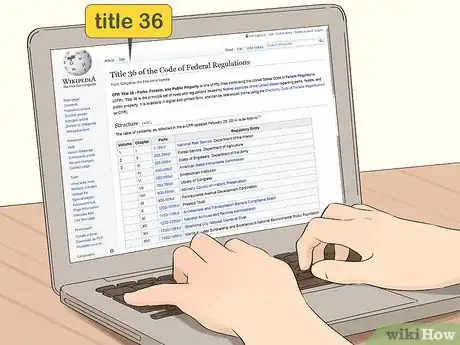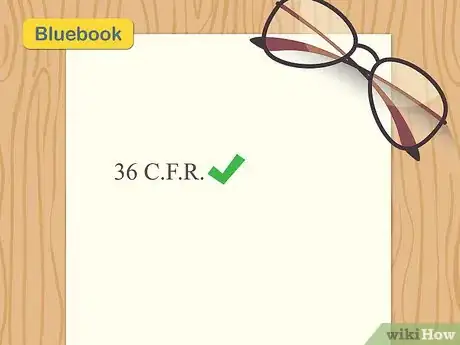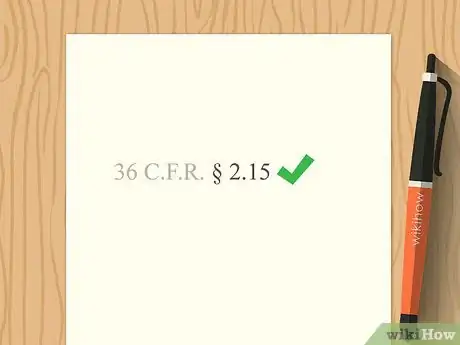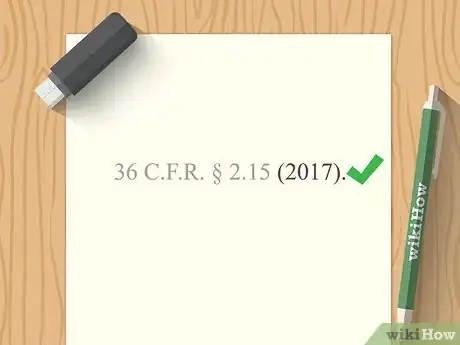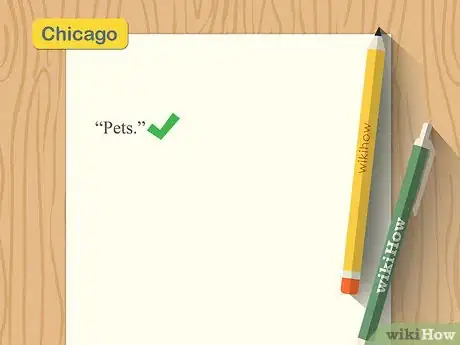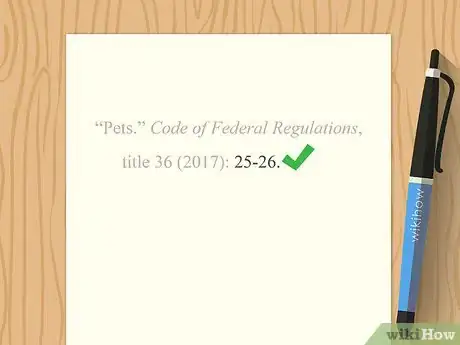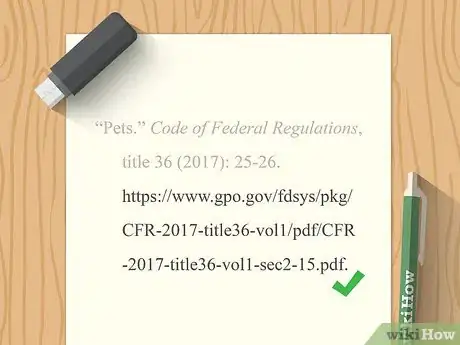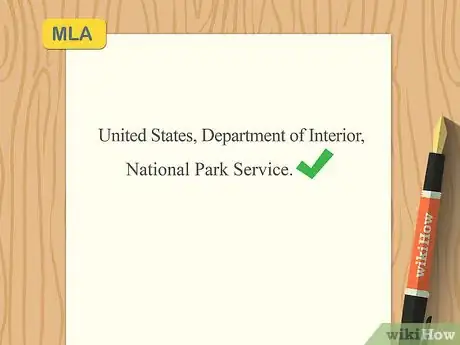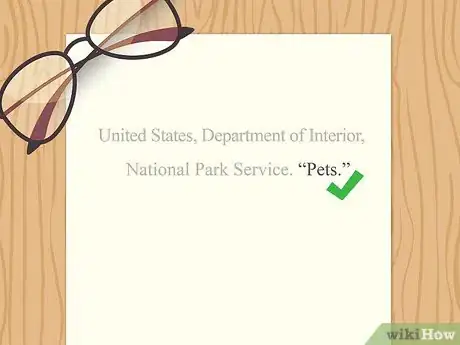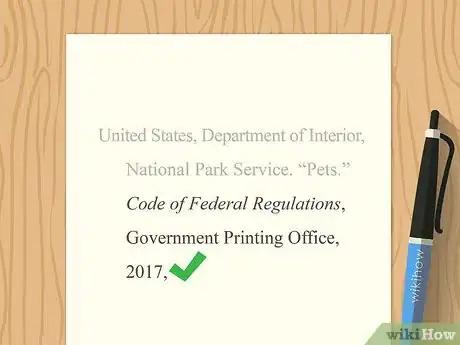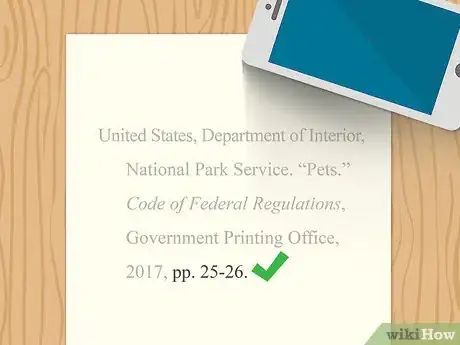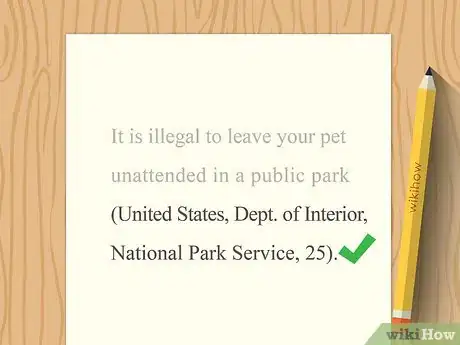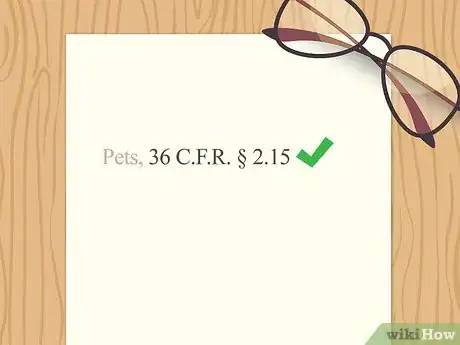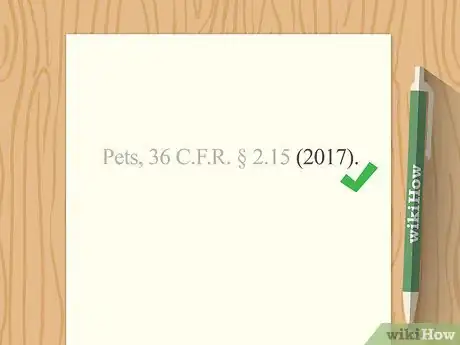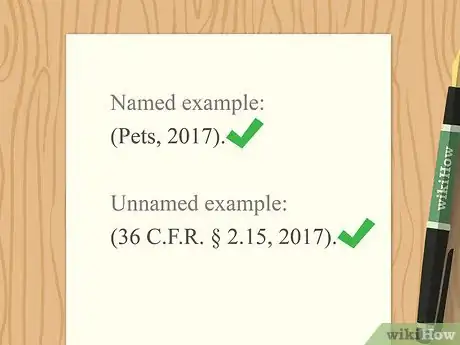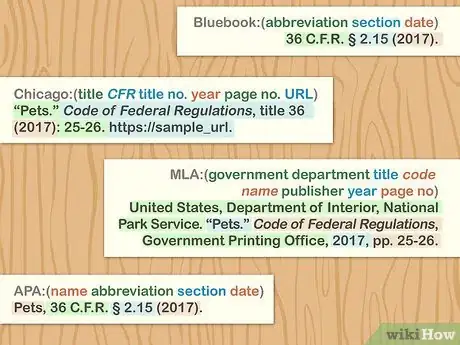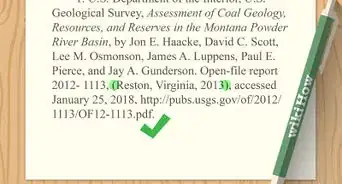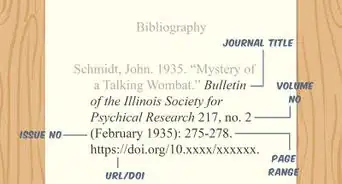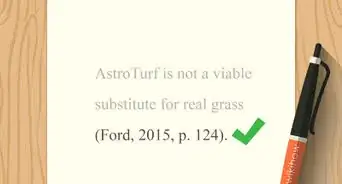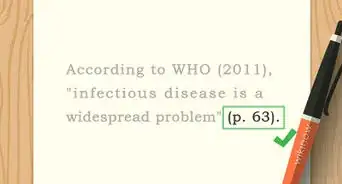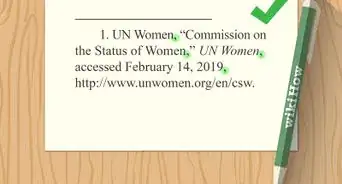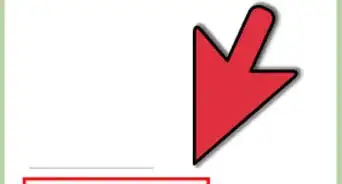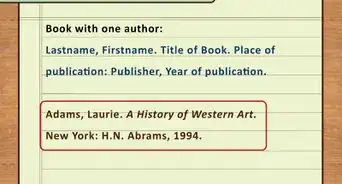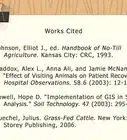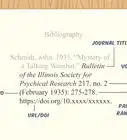This article was co-authored by wikiHow staff writer, Jennifer Mueller, JD. Jennifer Mueller is an in-house legal expert at wikiHow. Jennifer reviews, fact-checks, and evaluates wikiHow's legal content to ensure thoroughness and accuracy. She received her JD from Indiana University Maurer School of Law in 2006.
There are 13 references cited in this article, which can be found at the bottom of the page.
This article has been viewed 230,480 times.
Learn more...
Regulations issued by departments and agencies of the U.S. federal government are published in the Code of Federal Regulations (CFR). The CFR is organized into 50 titles, indicated by the title number. Each entry in the title is identified by a unique section number. You'll need to cite the CFR if you reference a federal regulation in a research paper or project. Bluebook format is primarily used for legal citations. If you're using the MLA, APA, or Chicago style of citation, your format may vary.
Steps
Bluebook
-
1Identify the title number for the regulation. There are 50 titles of the CFR, each of which represent broad areas that are subject to federal regulation. The title number lets your readers know which broad area the regulation addresses.[1]
Example: Title 36 of the CFR addresses parks, forests, and other public property. For Bluebook style, you would simply type the number of the title.
-
2Use the appropriate abbreviation for the Code of Federal Regulations. The Bluebook abbreviation for the CFR uses the first letters of each noun in the title. Place periods after each letter. Do not put spaces between the initials.[2]
Example: 36 C.F.R.
Advertisement -
3List the specific section cited. Type a space after the last initial period, then type the section symbol (§). Type another space, and then provide the specific number for the section you want to cite.[3]
Example: 36 C.F.R. § 2.15
-
4Provide the date of the code edition. The date of the code is listed at the top of the page, for online versions, or on the spine of the volume, for print versions. Type a space, then type the year of the code in parentheses.[4]
- Unless you are studying the evolution of a particular regulation and need to cite a historical version, use the most recent code edition available. This ensures you're citing the most up-to-date version of the regulation.
- Bluebook style cites to the canonical version of the law, not the specific version that you consulted. However, providing the year allows your readers to access the exact wording of the regulation that you used.[5]
Example: 36 C.F.R. § 2.15 (2017)
-
5Use the same format for your bibliography. The Bluebook uses sequential footnotes for in-text citations. Legal writing does not normally have a bibliography or reference list following the work.[6]
- If your instructor or supervisor wants you to include a bibliography or reference list, the format for a CFR citation does not change. However, your instructor or supervisor may want you to include the title of the regulation, or other information, in the full reference.
Chicago
-
1Start your reference entry with the title of the regulation. Chicago style treats regulations as though they don't have an author, so the first part of your reference entry is the title of the regulation. Type the title in title-case, surrounded by quotation marks. Put a period at the end of the title, inside the quotation marks.[7]
Example: "Pets."
-
2List the CFR title number and year of publication. Spell out the Code of Federal Regulations in italics, followed by a comma. Type the word "title," followed by the title number. Type a space, then put the year of the code edition in parentheses. Place a colon after the closing parentheses mark.[8]
Example: "Pets." Code of Federal Regulations, title 36 (2017):
-
3Identify the page numbers where the regulation appears. After the colon, provide the page numbers from the print edition of the CFR. Do not use any abbreviations before the numbers, such as "p." Place a period after the last page number digit. [9]
- If you accessed the CFR online, go to the Government Printing Office website at gpo.gov to get a PDF of the print version of the regulation. That way, you'll have a page number.
Example: "Pets." Code of Federal Regulations, title 36 (2017): 25-26.
-
4Provide a direct URL for the regulation. If you accessed the CFR online, the last part of your reference entry will be the direct URL or "permalink" for the regulation. Use the PDF available from the GPO, so that you have an online copy of the official print edition of the code. Place a period at the end of the URL.[10]
Example: "Pets." Code of Federal Regulations, title 36 (2017): 25-26. https://www.gpo.gov/fdsys/pkg/CFR-2017-title36-vol1/pdf/CFR-2017-title36-vol1-sec2-15.pdf.
-
5Use commas instead of periods in footnotes. When using a footnote for in-text citation, include all the same information you included in your reference list entry. However, instead of placing periods between the elements, use commas. The only period in a footnote is at the end.[11]
Example: "Pets," Code of Federal Regulations, title 36 (2017): 25-26, https://www.gpo.gov/fdsys/pkg/CFR-2017-title36-vol1/pdf/CFR-2017-title36-vol1-sec2-15.pdf.
MLA
-
1List the government department as the "author" of the regulation. List all administrative units in order from largest to smallest. For all regulations in the CFR, the first unit listed will be "United States." Place commas between administrative units and a period at the end. Spell out all words in your Works Cited entry.[12]
Example: United States, Department of Interior, National Park Service.
-
2Provide the title of the regulation in quotation marks. After the government department, type the title of the regulation. Use title case, capitalizing all nouns, pronouns, verbs, and adverbs. Place a period at the end of the title, inside the closing quotation marks.[13]
Example: United States, Department of Interior, National Park Service. "Pets."
-
3Include the name of the code and publication information. Type out the full name of the Code of Federal Regulations in italics, followed by a comma. In regular font, identify the Government Printing Office as the publisher, followed by a comma. Then type the year of the CFR edition. Type a comma after the year.[14]
Example: United States, Department of Interior, National Park Service. "Pets." Code of Federal Regulations, Government Printing Office, 2017,
-
4Pinpoint the location of the regulation. Following the publication information, provide the page numbers on which the regulation appears. Use the abbreviations "p." (for a single page) or "pp." (for multiple pages). Place a period after the last page number.[15]
Example: United States, Department of Interior, National Park Service. "Pets." Code of Federal Regulations, Government Printing Office, 2017, pp. 25-26.
-
5Use the government department for in-text citations. The MLA uses author-page number parenthetical citations within the text of your paper. For the author, list every administrative unit you listed in your Works Cited entry. Abbreviate commonly abbreviated words, such as "department." Include the page number where the portion of the regulation you are citing appears.[16]
Example: It is illegal to leave your pet unattended in a public park (United States, Dept. of Interior, National Park Service, 25).
APA
-
1Start your reference with the name of the regulation. Type the name of the regulation in sentence-case, capitalizing only the first word and any proper nouns. Place a comma after the name of the regulation.[17]
- If the regulation is commonly known or identified by its name, use that name as the first part of your reference entry. If the regulation's name isn't commonly known, you can skip to the next part of the entry if you want.
Example: Pets,
-
2Provide the title and section number of the regulation. Type a space after the comma following the name of the regulation. Type the title number of the regulation, then the abbreviation "C.F.R." Type a space, then type the section symbol (§), a space, and the number of the section.[18]
Example: Pets, 36 C.F.R. § 2.15
-
3Close your reference with the edition year of the CFR. Type a space after the section number, then type the year of the CFR edition in parentheses. Place a period after the closing parentheses mark to close out your reference entry.[19]
Example: Pets, 36 C.F.R. § 2.15 (2017).
-
4Use the name and year for in-text parenthetical citations. APA style uses name-year parenthetical citations when you paraphrase or quote the regulation in text. If you didn't include the name of the regulation in your citation, use the title and section number instead. Separate elements with a comma.[20]
- Named example: (Pets, 2017).
- Unnamed example: (36 C.F.R. § 2.15, 2017).
References
- ↑ http://guides.ll.georgetown.edu/bluebook/citing-other
- ↑ https://law.gwu.libguides.com/federalregulatory/citations
- ↑ https://law-hawaii.libguides.com/c.php?g=125486&p=821648
- ↑ https://libguides.niu.edu/c.php?g=700603&p=5051210
- ↑ https://style.mla.org/documenting-legal-works/
- ↑ http://guides.ll.georgetown.edu/bluebook/citing-other
- ↑ https://library.bowdoin.edu/research/chicago-gov.pdf
- ↑ https://libguides.nps.edu/citation/chicago-nb#legal-code
- ↑ https://library.bowdoin.edu/research/chicago-gov.pdf
- ↑ https://libguides.nps.edu/citation/chicago-nb#legal-code
- ↑ https://libguides.nps.edu/citation/chicago-nb#legal-code
- ↑ https://libguides.up.edu/mla/common/government-legal
- ↑ http://irsc.libguides.com/c.php?g=483085&p=3303421
- ↑ https://libguides.up.edu/mla/common/government-legal
- ↑ https://libguides.up.edu/mla/common/government-legal
- ↑ http://irsc.libguides.com/c.php?g=483085&p=3303421
- ↑ https://libguides.umgc.edu/c.php?g=1003870&p=7423433
- ↑ https://guides.zsr.wfu.edu/c.php?g=1014307&p=7346633
- ↑ https://guides.library.cornell.edu/citing_us_gov_docs/rulesRegulations
- ↑ http://blog.apastyle.org/apastyle/2013/07/the-rules-for-federal-regulations-i-code-of-federal-regulations.html
- ↑ https://style.mla.org/documenting-legal-works/
About This Article
If you reference a federal regulation in a research paper or project, you’ll need to cite the code of Federal Regulations. For the Bluebook format, which is typically used for legal citations, start by Identifying the title number for the regulation. This will let your readers know which broad area the regulation addresses. Use the right abbreviation for the Code of Federal Regulations, which is made up of the first letters of each noun in the title. Place periods after each letter. Type a space after the last initial period, then type the section symbol. After adding another space, give the specific number for the section you want to cite. You’ll then need to cite the date of the code edition in parentheses. To learn how to cite the code of Federal Regulations in MLA format, keep reading!
